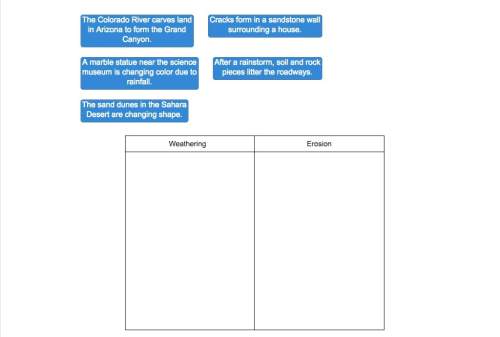
Biology, 27.03.2020 21:45 jaedenevan062907
Biologists believe that eukaryotic cells arose from the endosymbiosis of prokaryotio cells. In this theory, prokaryotic cells (endosymbionts) took up residence inside much larger prokaryotic cells (the hosts). Modern-day mitochondria may be descendants of engulfed, heterotrophic bacteria that eould use oxywen to refeabe energy from onganic molecules through aerobic respiration. These specialised prokaryotes were not digest ed by the hosts, but remained alive inside vacuoles of the host cell, performing the same energy-production processes they had done when they were separate organiama Chloroplasts may be descendants of photosynthetic prokaryotes that could capture the energy of sunlight and use that energy to produce organic molecules from CO, The phylogenetic tree depicted in Figure 7.2 shows these evolutionary scenarios)
a. Which is greater: the proportion of modern-day eukaryotes that have mitochondria, or the proportion of modern-day eukaryotes that have chloroplasts?
b. What does this suggest about the sequence of evolutionary developments leading to mitochondria and chloroplasts? (In other words, which more likely came first: mito- chondria or chloroplasts?)
c. What modern day bacteria are likely to be most similar to the chloroplast ancestor?
d. Protists were formerly classified based primarily on their method of locomotion. Name a cell structure some protists have that enable them to move from place to place that some bacteria species also have. (Hint: By looking ahead to the protists that you will examine in lab, you might get a clue).

Answers: 1
Another question on Biology

Biology, 22.06.2019 02:00
The pharynx is the structure in the body that serves as a pathway of both air and food. how does the body make sure that food does not get into the lungs? the salivary glands secrete enzymes that pull food out of the air pathway. the small intestine pushes the air out of the digestive system. the pancreas breaks down food in the air pathway. the epiglottis closes the air pathway so that food will not enter it.
Answers: 1

Biology, 22.06.2019 03:00
Sediment layers stop lateral spreading when: they encounter a barrier they encounter an opposing current they run out of additional sedimentary material
Answers: 2

Biology, 22.06.2019 04:30
Asap brainliest will be which sentence about protists is accurate? all protists are unicellular and microscopic in nature. they have organelles, so protists are eukaryotic in nature. all protists make their own energy through photosynthesis.
Answers: 1

Biology, 22.06.2019 06:30
Mitosis creates two identical daughter cells from one parent cell creates four nonidentical daughter cells from one parent cell is the most common type of reproduction for bacteria is the process by which male and female reproductive cells are created
Answers: 1
You know the right answer?
Biologists believe that eukaryotic cells arose from the endosymbiosis of prokaryotio cells. In this...
Questions

Health, 01.07.2019 13:00

Mathematics, 01.07.2019 13:00

Mathematics, 01.07.2019 13:00

English, 01.07.2019 13:00




Social Studies, 01.07.2019 13:00





Mathematics, 01.07.2019 13:00

Mathematics, 01.07.2019 13:00

Mathematics, 01.07.2019 13:00

Biology, 01.07.2019 13:00

History, 01.07.2019 13:00

Mathematics, 01.07.2019 13:00

Biology, 01.07.2019 13:00

History, 01.07.2019 13:00




